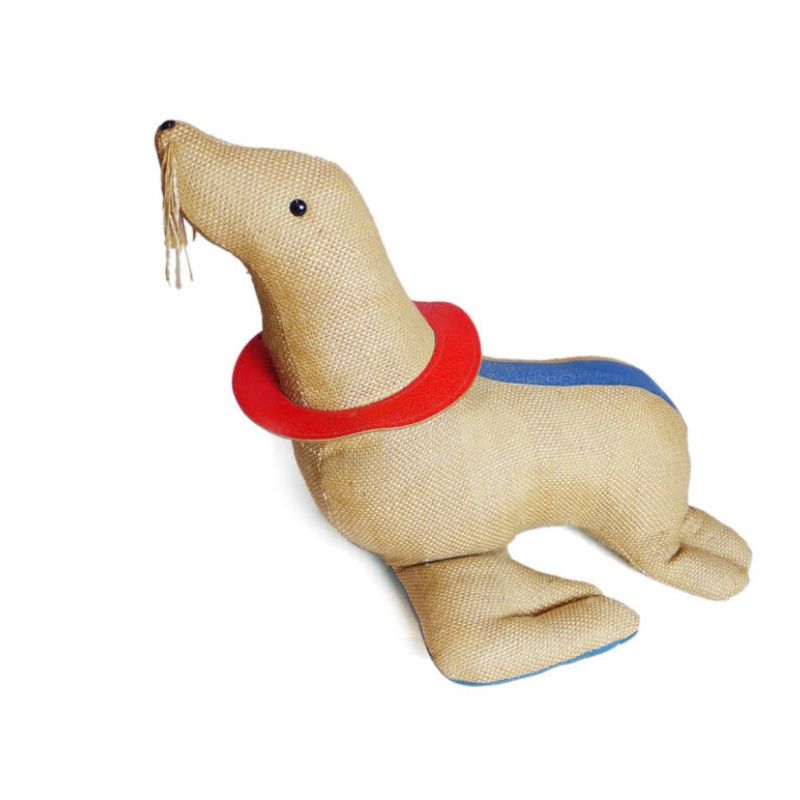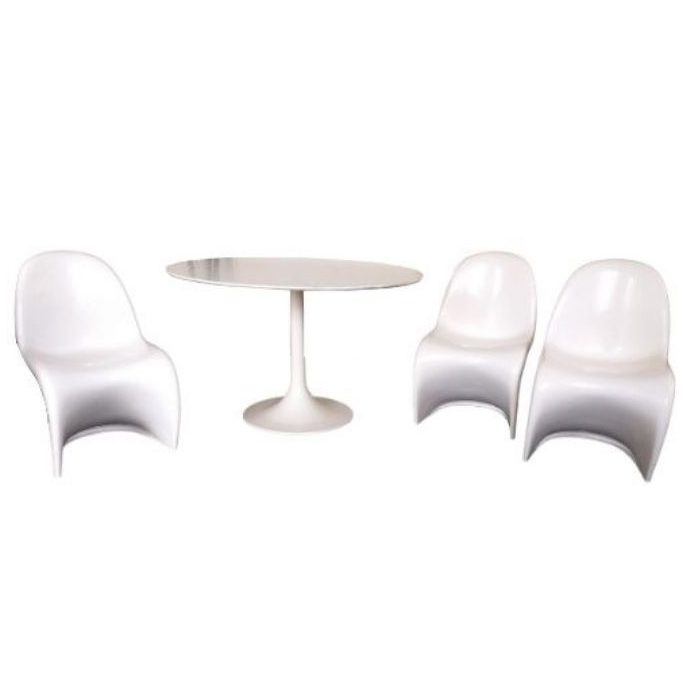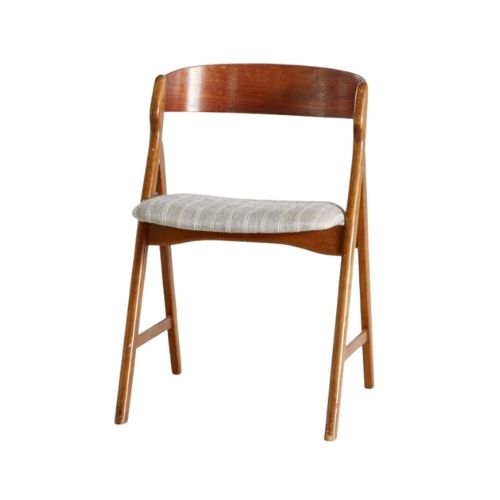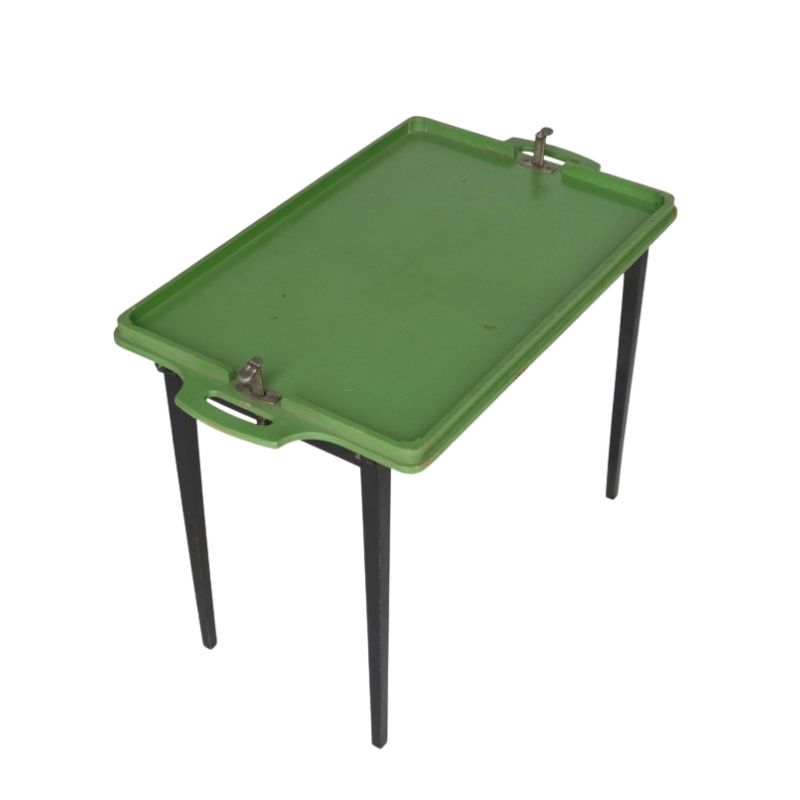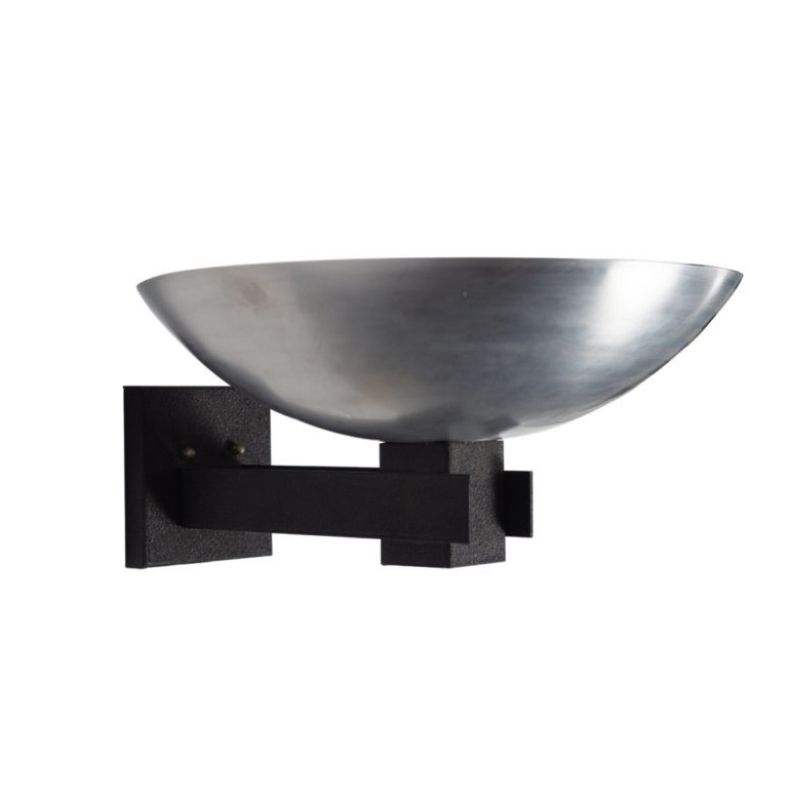Hi all, love this site - it is fascinating!
I have a solid teak (? - when sanded back to the wood, the sanding dust was yellow in colour and has little hardwood looking flecks within the grain) round table which looks very similar to the John Mortensen designed tables for Heltborg - especially the top but it is obviously not identical.
It has a 'Furniture Makers Danish Control' round black metal plate on the underside and is stamped Made in Denmark on the top of the leg section. It has metal runners underneath that are marked Rosengaarden but it is not identical to any tables by that maker(?) I have seen either. There is an identical table in rosewood on this website http://www.collectionet.co.uk/collection/item/johannes-andersen-dining-table/ attributing it to Johannes Andersen but I haven't found any other attributed examples that look like this, and reading up about the Andersen style, it doesn't seem to add up.
It's a mystery..... please can anyone help?

The legs are solid teak. The top is veneer. And I expect the edge banding is laminated bendong veneer.
And I believe it is actually a Johannes Andersen design for Hans Bech. There is a matching sideboard with similar legs, and a hexagonal topped table with the same legs as your table. Both documented. It is from 1968. Not very common. And you are right, your table does not look a lot like a Johannes Andersen design, even though it almost certainly is.
Hi Leif,
thank you so much for that help - it is a lovely table and very heavy. The edging sounds exactly right (I had to look up laminated bendong veneer) - the outer layer is 7mm thick and stuck to a much thicker base wood.
I have put a clearer photo of the top and side profile of the top though - having sanded it right back it does appear that the same wood goes all the way through (except the bottom which does seem to have a very thin layer of a darker wood - but that doesn't make a lot of sense). Is it possible that this is a solid wood top - when you look at the table along its inside (middle) split, I can't see any evidence of veneer. Any colour change in the pic is old varnish.
thanks very much, Jenny

I can't make out what I am seeing in the photo, but I don't even really need to. Knowing the edge banding wraps around, I know remainder of the table top can not be solid wood. You see, solid wood expands and contracts with humidity difference. You can not keep a rigid half circle of edge banding attached to a moving wood core; the glue bond will break in a few years maximuimum. Particle board does not move, so what you have is particle board with veneer on it.
the pictures show the edge of the table top where the two halves join together (joined by Rosengaarden metal runners). These are the parts that pull apart to insert an extension leaf if there was one and are stabilised with a tongue and groove type of join.
So in the picture showing the groove you can see the grain all the way through the thickness of the wood that it all appears to be part of the same piece of wood with no separate layers added. I take your point about the expansion of the main part of the top and the banding but wonder if that might be mitigated by the fact that the banding is only around half of each table top?
thank you very much for your help on this - I like trying to solve the mystery.


The only thing that matters is the amount of expansion and contraction. At a small scale, the woodworker does not need to worry about these sorts of things. PVA glue has some small degree of elasticity to it (it is a plastic after all). Suppose that it can stretch by 1/64 inch along the length of a glue line. Now if you have a small tray made out of solid teak, violating all the rules of wood movement, it may only expand and contract by 1/64 inch, so the glue bond holds. Scale that up to a table, and the teak expands and contracts by 1/4 inch; the glue bond fails.
If you look closely at the groove edge of your table, you will see that the groove is cut into beech wood. And you can see the dark line of counter veneer below it, and teak veneer above. So the beech is just a fairly narrow strip of edge banding outside the core of particle board.
There is nothing wrong with your table being veneer. Almost all danish modern tables are veneer. And it is not categorically the case that the better tables are solid teak. Many of the "better" pieces are veneer. A few are solid wood. Some of the "worse" pieces are solid wood too, and some are veneer.
great news, thanks Leif - it is obviously a good one as I can't see the joins :¬)
would you recommend an oiled finish once I have taken off the varnish (there were loads of chips and dents and it didn't look original)?
I might get it valued if it is a good one - the rosewood one on the link I sent was retailing for £3k ish and obviously wouldn't be anywhere near that - do you have any recommendations?
The design is from the late 60s, and a thick acid cured lacquer with "oil" over it had become much more common by then. It is a very durable finish, but it does not look so great when it starts falling apart. You can't really duplicate that finish outside a major shop with exactly the right tools, and expertise. I think a teak oil finish would be quite appropriate.
It is likely no thicker that 1/30 of an inch. So it is thin. Be very, very careful sanding it. If you put acetone on the top, and cover it with a paper towel to slow the evaporate, it will soften the lacquer, and you can scrape it off with a plastic spatula. This is one of Spanky's techniques.
If you need any help, please contact us at – info@designaddict.com




